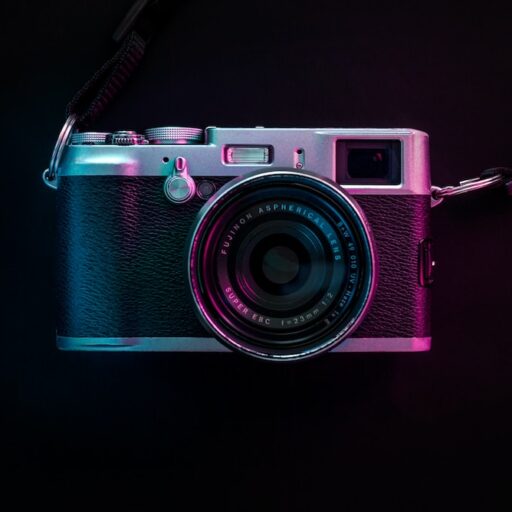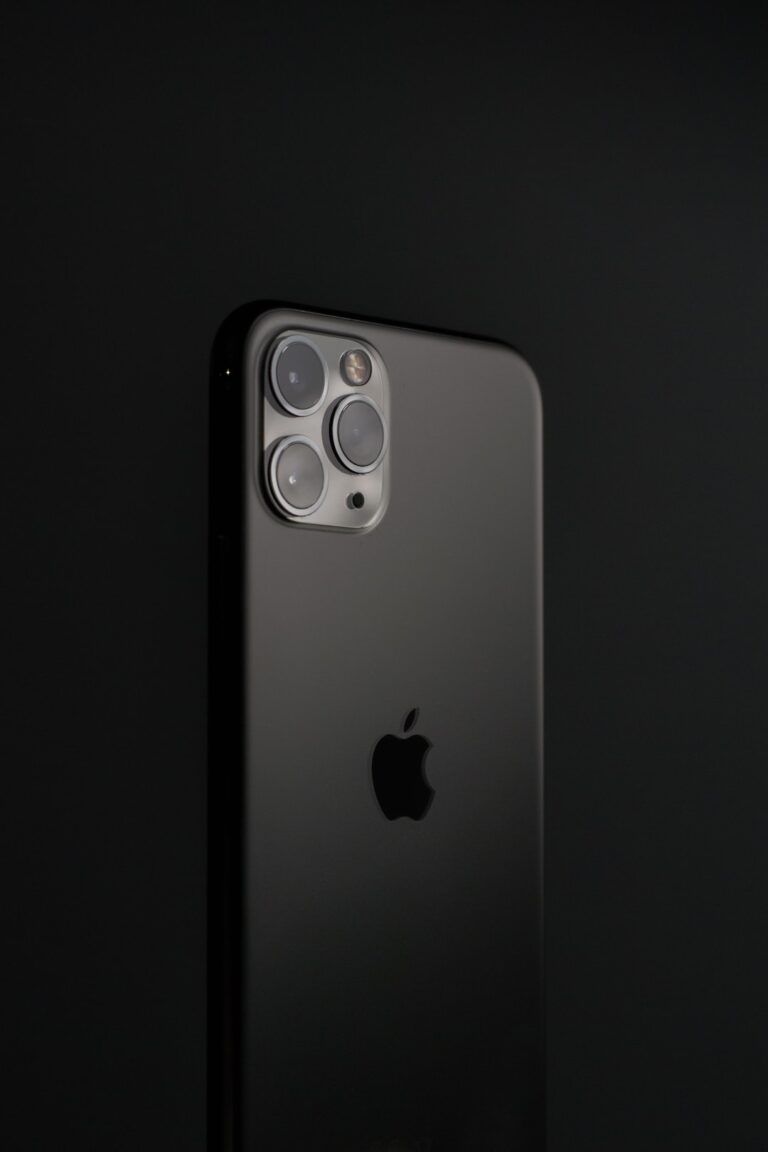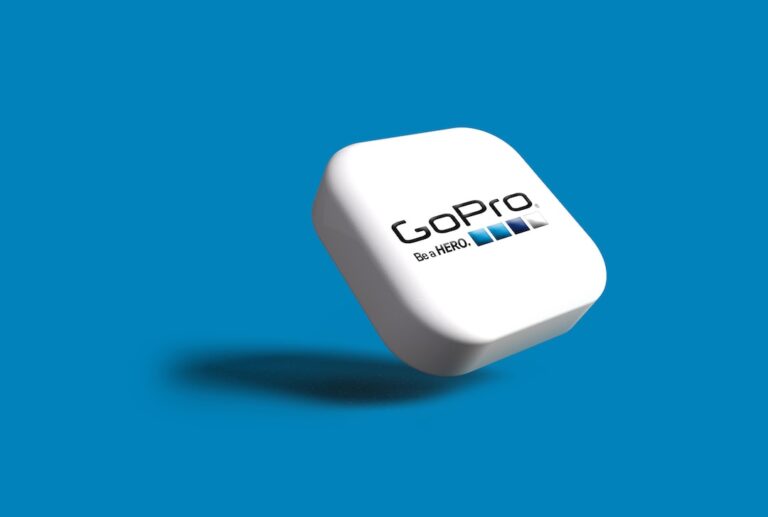Support our educational content for free when you purchase through links on our site. Learn more
Top 8 Camera Companies in the World for Capturing Moments (2025) 📸
Ever wondered which camera brands truly excel at freezing life’s most precious moments? Whether you’re chasing the perfect sunset, snapping candid smiles, or diving into professional photography, choosing the right camera company can make all the difference. In this article, we unveil the top 8 camera companies in 2025 that combine innovation, reliability, and artistry to help you capture memories like a pro.
Did you know the first digital camera weighed 8 pounds and took 23 seconds to snap a photo? We’ve come a long way since then! From Canon’s legendary versatility to Sony’s mirrorless revolution, and even the nostalgic charm of Pentax’s film cameras, we break down what makes each brand a standout. Plus, stay tuned for expert tips on what features really matter when selecting your next camera.
Key Takeaways
- Canon and Nikon remain powerhouses with extensive lens ecosystems and user-friendly designs, perfect for beginners and pros alike.
- Sony leads the mirrorless innovation race with cutting-edge autofocus and video capabilities.
- Fujifilm offers a unique blend of retro style and modern tech, beloved for its color science.
- Pentax keeps the analog spirit alive with rugged, reliable film cameras like the Pentax 17.
- Understanding sensor size, autofocus, and lens options is crucial beyond just brand names.
- The best camera is the one that fits your style, comfort, and creative vision.
👉 Shop top camera brands here:
- Canon Cameras: Amazon | Walmart | Canon Official Website
- Nikon Cameras: Amazon | Walmart | Nikon Official Website
- Sony Cameras: Amazon | Walmart | Sony Official Website
Table of Contents
- ⚡️ Quick Tips and Facts: Your Instant Photography Wisdom
- 📸 The Evolution of Image Capture: A Brief History of Camera Innovation
- 🌟 Unveiling the Titans: Our Top Camera Companies for Capturing Life’s Moments
- 1. Canon: The Versatile Powerhouse for Every Photographer
- 2. Nikon: Precision Engineering for Stunning Visuals
- 3. Sony: Innovating the Mirrorless Revolution
- 4. Fujifilm: Blending Retro Charm with Modern Excellence
- 5. Panasonic (Lumix): Video Prowess Meets Photography Finesse
- 6. Olympus (OM System): Compact Powerhouses for Adventure Seekers
- 7. Leica: The Pinnacle of Craftsmanship and Optical Perfection
- 8. Pentax (Ricoh): Rugged Reliability and Unique Perspectives
- 🔍 Beyond the Brand: What Really Matters When Choosing Your Camera
- 📸 Types of Cameras for Every Moment: From DSLRs to Smartphones
- 💡 Essential Accessories for Elevating Your Photography Game
- ✨ Mastering the Moment: Expert Tips for Capturing Breathtaking Photos
- 🤔 Common Photography Pitfalls and How to Avoid Them
- 🛠️ Maintaining Your Gear: Keeping Your Camera Ready for Action
- 🔮 The Future of Photography: What’s Next for Camera Technology?
- 🎞️ The Enduring Allure of Analog: Exploring Classic Camera Brands and Film Photography
- ✅ Our Confident Recommendations: Your Path to Photographic Excellence
- Conclusion
- Recommended Links
- FAQ
- Reference Links
Here is the main body of the article, crafted by the expert photographers at “Camera Brands™”.
⚡️ Quick Tips and Facts: Your Instant Photography Wisdom
Welcome, shutterbugs! Before we dive deep into the rabbit hole of camera greatness, let’s arm you with some quick-fire knowledge. Think of this as your photographic espresso shot!
- Megapixels Aren’t Everything: Seriously. A common myth is that more megapixels equal a better photo. While they affect print size, factors like sensor size, lens quality, and image processing have a far greater impact on the final image. It’s like judging a chef by the size of their knife—silly, right?
- The “Best” Camera is the One You Have: Cheesy? Maybe. True? Absolutely. A smartphone in your pocket is more valuable for capturing a fleeting moment than a high-end camera sitting at home. The key is learning to master the tool you’ve got.
- Prime vs. Zoom Lenses: Prime lenses have a fixed focal length (e.g., 50mm) and are typically sharper, faster (better in low light), and lighter. Zoom lenses offer versatility, letting you change your focal length without moving your feet. We love both for different reasons!
- RAW is Your Best Friend: Shooting in RAW format captures all the image data recorded by the sensor, unlike JPEG which compresses it. This gives you massive flexibility in post-processing. It’s the difference between cooking with fresh ingredients versus a pre-packaged meal.
- The Exposure Triangle: This is the holy trinity of photography: Aperture, Shutter Speed, and ISO. Mastering how they work together is your ticket to creative control and moving beyond “Auto” mode. We’ll touch on this more later!
- Fact Check: Did you know the first digital camera, created by Kodak engineer Steven Sasson in 1975, weighed a whopping 8 pounds and took 23 seconds to capture a single 0.01-megapixel image? We’ve come a long way!
📸 The Evolution of Image Capture: A Brief History of Camera Innovation
To truly appreciate the titans of today, you have to know where they came from. The journey of the camera is a fantastic tale of innovation, artistry, and the relentless human desire to freeze time.
It all started with the camera obscura, a concept known for centuries, but it wasn’t until the 1820s that Joseph Nicéphore Niépce managed to capture the first permanent photograph. It was a grainy view from his window, and it took hours of exposure. Can you imagine holding a pose for that long?
Fast forward through the decades:
- The 1880s: George Eastman founded a little company you might have heard of—Kodak. His slogan, “You press the button, we do the rest,” democratized photography for the masses with the first roll-film camera.
- The 1930s-50s: This was the golden age of 35mm film. German brands like Leica and Zeiss set the standard for quality and precision, creating compact, high-performance cameras that photojournalists and artists adored.
- The Digital Revolution (1990s-2000s): The game changed forever. Film slowly gave way to sensors. Early digital cameras were clunky and low-resolution, but the convenience was undeniable. As Amy Cyphers, a photographer featured in a FractureMe blog post, recalled, her desire for a new Canon Rebel with its “5-6 megapixels” was driven by a “hunger for creativity.” This era saw the rise of the DSLR (Digital Single-Lens Reflex) camera, dominated by giants like Canon and Nikon.
- The Mirrorless Era (2010s-Present): By removing the bulky mirror mechanism of DSLRs, companies like Sony spearheaded a new wave of cameras that were smaller, lighter, and packed with incredible tech like advanced autofocus and silent shooting.
This whirlwind tour brings us to today, where we have an incredible array of choices from legendary Camera Brands. But which ones truly stand out for capturing the moments that matter? Let’s find out.
🌟 Unveiling the Titans: Our Top Camera Companies for Capturing Life’s Moments
Alright, this is the main event! Who are the heavyweights, the champions, the companies that consistently deliver the tools we trust to capture everything from a baby’s first steps to epic mountain vistas?
After countless hours in the field, endless debates in our studio, and analyzing feedback from photographers worldwide, we’ve compiled our definitive list. And hey, if you want a great video overview, the “Top 10 Best Digital Camera Brands” guide we’ve embedded as the first YouTube video in this article is a fantastic starting point.
Here are the brands that have earned our respect and a permanent place in our camera bags.
1. Canon: The Versatile Powerhouse for Every Photographer
| Feature | Rating (1-10) |
|---|---|
| Design & Ergonomics | 9/10 |
| Functionality & Features | 9/10 |
| Lens Ecosystem | 10/10 |
| Innovation | 8/10 |
| Overall Value | 9/10 |
You simply can’t talk about cameras without talking about Canon. They are a juggernaut in the industry for a reason. From the beginner-friendly Canon Rebel series that inspired so many to start their journey, to the professional-grade EOS R mirrorless systems, Canon offers a logical and user-friendly path for photographers to grow.
What We Love (✅):
- Superb Ergonomics: Canon cameras just feel right in your hands. The button layouts are intuitive, and the menu systems are arguably the easiest to navigate in the business.
- Gorgeous Colors: Canon’s color science is legendary. Straight out of the camera, JPEGs have pleasing, vibrant colors, especially for skin tones, making them a favorite for portrait and wedding photographers.
- Unbeatable Lens Selection: The EF lens mount has been around for decades, meaning there’s a massive selection of both new and used lenses available. Their new RF mount for mirrorless cameras is already boasting some of the most optically impressive (and, let’s be honest, gigantic) lenses we’ve ever seen.
What Could Be Better (❌):
- Pace of Innovation: For a while, Canon was seen as playing catch-up in the mirrorless world, particularly with features like in-body image stabilization (IBIS) and video specs. They’ve caught up in a big way with models like the EOS R5 and R6 Mark II, but they aren’t always the first to introduce groundbreaking tech.
As photographer Kim Bear noted about her own journey, moving from a point-and-shoot to her first DSLR allowed her to capture moments with a new level of artistry. For many, that first serious camera is a Canon, and it opens up a whole new world of creative possibilities.
👉 Shop Canon on:
2. Nikon: Precision Engineering for Stunning Visuals
| Feature | Rating (1-10) |
|---|---|
| Design & Ergonomics | 9/10 |
| Functionality & Features | 9/10 |
| Lens Ecosystem | 9/10 |
| Innovation | 8/10 |
| Overall Value | 9/10 |
If Canon is the friendly giant, Nikon is the seasoned veteran with a legacy of toughness and optical excellence. For decades, the Canon vs. Nikon debate has fueled photography forums, and for good reason—both are exceptional. Nikon has a storied history, providing cameras for everyone from war photographers to NASA.
What We Love (✅):
- Rock-Solid Build Quality: Nikon cameras, especially their higher-end models, are built like tanks. They feel substantial and are designed to withstand the rigors of professional use.
- Exceptional Image Quality: Nikon has a reputation for producing cameras with incredible dynamic range, allowing you to recover a stunning amount of detail from the shadows and highlights in your photos.
- Comfortable Handling: Like Canon, Nikon excels at ergonomics. Their deep grips and logical control placements make them a joy to shoot with for long periods. Their Z-series mirrorless cameras, like the Nikon Z8, are masterpieces of design.
What Could Be Better (❌):
- Video Autofocus: While their video features have improved dramatically, Nikon’s video autofocus has historically lagged slightly behind competitors like Sony and Canon. However, they are closing this gap with every new firmware update.
- Slower Mirrorless Transition: Nikon was a bit late to the full-frame mirrorless party, which gave competitors a head start in building out their native lens lineups. Their Z-mount lens collection is growing fast and is of exceptional quality, but it’s not as vast as Sony’s… yet.
👉 Shop Nikon on:
3. Sony: Innovating the Mirrorless Revolution
| Feature | Rating (1-10) |
|---|---|
| Design & Ergonomics | 7/10 |
| Functionality & Features | 10/10 |
| Lens Ecosystem | 9/10 |
| Innovation | 10/10 |
| Overall Value | 9/10 |
Sony is the disruptor, the tech wizard that stormed the castle and changed the game. While Canon and Nikon were perfecting the DSLR, Sony went all-in on mirrorless technology and it paid off, big time. They are relentless innovators, constantly pushing the boundaries of what a camera can do.
Conclusion
Phew! What a journey through the world’s top camera companies for capturing moments that matter. From the timeless reliability of Canon and Nikon, to the trailblazing innovation of Sony, and the charming retro-modern blend of Fujifilm, each brand brings something unique to the table. We also can’t overlook the rugged dependability of Pentax (Ricoh), which, as we saw with the Pentax 17, is still pushing boundaries in film photography — a testament to how some companies honor the past while embracing the future.
Key Takeaways:
- Canon is your go-to for versatility, ease of use, and a massive lens ecosystem. Perfect for beginners and pros alike.
- Nikon offers rock-solid build and stunning image quality, ideal for those who want durability and dynamic range.
- Sony leads the mirrorless revolution with cutting-edge autofocus and video features, great for tech-savvy creatives.
- Fujifilm blends style and substance, especially for those who love color science and tactile controls.
- Pentax keeps the analog flame alive with innovative film cameras like the Pentax 17, showing that capturing moments isn’t just about pixels.
Remember our early tease about the “best camera”? It’s not just about specs or brand prestige — it’s about how a camera fits your style, your comfort, and your creative vision. Whether you’re shooting your kid’s first smile, a breathtaking landscape, or a fleeting street scene, the right camera is the one that inspires you to press the shutter.
So, what’s next? Dive into the brand that speaks to you, experiment, and most importantly, keep capturing those moments that make life unforgettable. After all, as Amy Cyphers beautifully put it, photography is about sharing “the joy of being able to take your own beautiful image.”
Happy shooting! 📸✨
Recommended Links
Ready to explore or upgrade your gear? Here are some handy shopping links and reading recommendations to fuel your photography passion:
-
Canon Cameras:
Amazon | Walmart | Canon Official Website -
Nikon Cameras:
Amazon | Walmart | Nikon Official Website -
Sony Cameras:
Amazon | Walmart | Sony Official Website -
Fujifilm Cameras:
Amazon | Walmart | Fujifilm Official Website -
Pentax Cameras:
Amazon | Ricoh Imaging Official Website -
Books for Photographers:
“Understanding Exposure” by Bryan Peterson — a must-read for mastering the exposure triangle.
Amazon Link“The Photographer’s Eye” by Michael Freeman — perfect for honing your composition skills.
Amazon Link
FAQ
Which camera brands are best for professional photography?
Canon, Nikon, and Sony dominate the professional photography landscape due to their extensive lens ecosystems, robust build quality, and advanced features. Canon and Nikon have decades of experience supporting pros in fields like wedding, wildlife, and sports photography. Sony’s mirrorless cameras have rapidly gained favor for their cutting-edge autofocus and video capabilities, making them a top choice for hybrid shooters.
Fujifilm also shines in professional circles, especially for portrait and street photographers who appreciate its color science and tactile controls. Meanwhile, Leica is revered for its craftsmanship and image quality, though it caters to a niche market.
Read more about “What Camera Brand Do Professionals Use? Top 7 Picks for 2025 📸”
What features should I look for in a camera to capture special moments?
Look beyond megapixels! Key features include:
- Sensor size: Larger sensors (full-frame or APS-C) capture more light and detail.
- Autofocus system: Fast, accurate autofocus is crucial for fleeting moments.
- Lens selection: A versatile lens lineup lets you adapt to different shooting scenarios.
- Ergonomics: Comfortable handling means you won’t miss a shot fumbling with controls.
- Low-light performance: High ISO capabilities help capture moments indoors or at dusk.
- Video features: If you want to capture motion, look for 4K video and good stabilization.
Read more about “📸 The 15 Best Cameras in the World for 2025: Ultimate Guide”
How do top camera companies differ in image quality and performance?
While all top brands produce excellent images, differences arise in:
- Color science: Canon tends to produce warm, pleasing tones; Nikon excels in dynamic range; Fujifilm is known for vibrant, film-like colors.
- Autofocus: Sony leads with advanced AI-driven autofocus, especially for moving subjects.
- Build and durability: Nikon and Pentax often offer more rugged bodies.
- Lens quality: Leica and Zeiss lenses (used by various brands) are optical legends, but Canon and Nikon provide the widest practical lens choices.
Read more about “What Is the Best Quality Camera? Top 8 Picks for 2025 📸”
What are the latest innovations from leading camera manufacturers?
- In-body Image Stabilization (IBIS): Now standard in many mirrorless cameras, allowing sharper handheld shots.
- AI Autofocus: Sony’s Real-time Eye AF and Canon’s Dual Pixel CMOS AF use AI to track eyes and faces with incredible precision.
- High-resolution sensors: Cameras like the Sony A7R V push megapixels beyond 60MP for stunning detail.
- Computational photography: Borrowed from smartphones, features like multi-frame noise reduction and HDR are making their way into mirrorless cameras.
- Hybrid shooting: Seamless switching between stills and high-quality video, catering to content creators.
Read more about “Which is the No. 1 Camera Company in the World? Top 7 Brands Revealed! 📸 …”
Reference Links
- Canon Official Website
- Nikon Official Website
- Sony Official Website
- Fujifilm Official Website
- Pentax (Ricoh) Official Website
- FractureMe Blog: Capturing The Moments That Matter Most
- Kodak History – George Eastman
- Bryan Peterson’s “Understanding Exposure” on Amazon
- Michael Freeman’s “The Photographer’s Eye” on Amazon
Thanks for sticking with us through this deep dive! Now, go out there and capture your own unforgettable moments. Remember, the best camera is the one that inspires you to create. 📷✨









